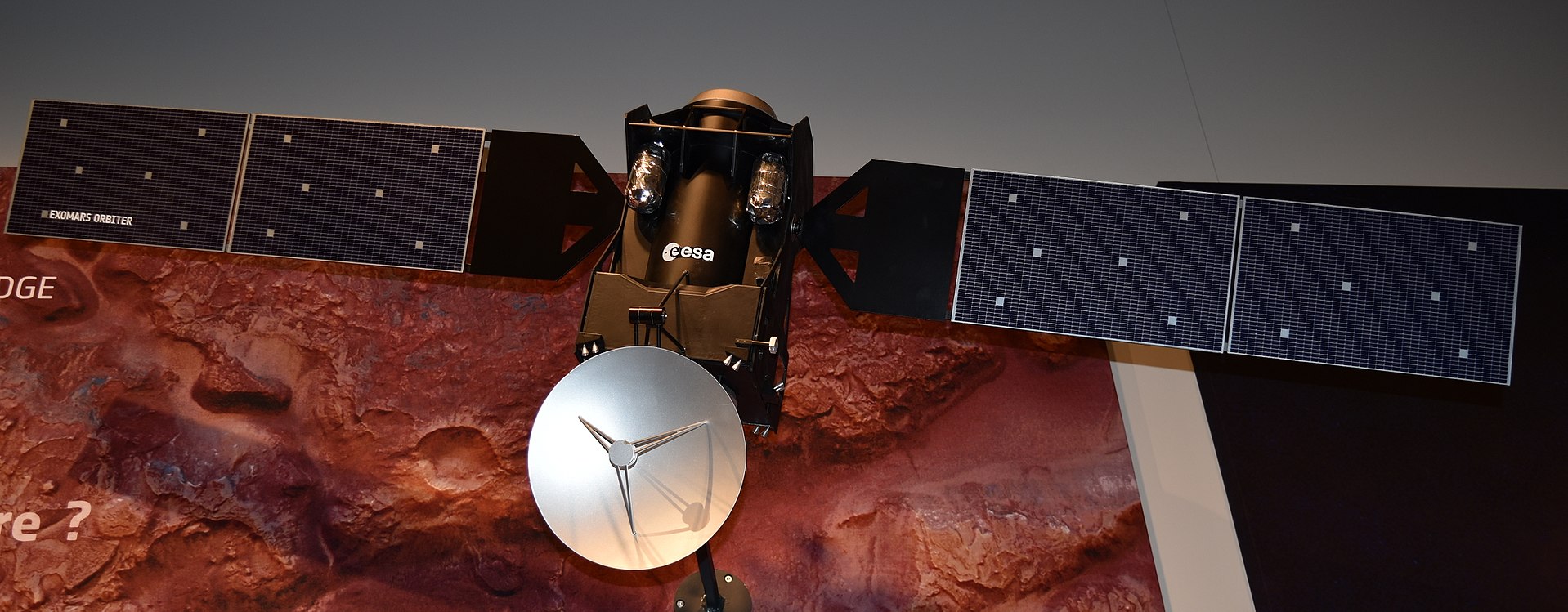
(Paris Air Show, 2015)
The Trace Gas Orbiter, which is part of a joint venture between the European Space Agency (ESA) and the Russian space agency Roscosmos, has been orbiting Mars for over a year and is now in position to begin its research. These readings and results started to be gathered on April 21st and are now flowing back home for analysis and review.
Specifically, this probe is investigating the methane which is present in the Martian atmosphere, because it is very often associated with the former (or current!) presence of life. On Earth, an overwhelming percentage of the available methane is the result of biological processes. To add stakes to the game, current scientific understanding of the Martian atmosphere says that what is there should be destroyed by ongoing chemical reactions in several hundred years, though there it remains.
The orbiter has 2 main scientific instruments through which it will make this survey:
* the main spectrometer, NOMAD, operates in the infrared, ultraviolet and visible parts of the electromagnetic spectrum.
* the color camera, CaSSIS, will build detailed 3D maps of the planet’s terrain.
The craft will eventually serve in a new capacity as a communications depot once the ExoMars Rover arrives in 2021, relaying signals from the ground based explorer back to mission control.
